Thermogenerators: how to “weld” electricity on a gas stove
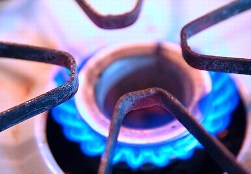 How can I get electricity using ordinary household gas? In order to receive electricity directly from a gas burner or other heat source, heat generators are used. Just like a thermocouple, their principle of operation is based on the Seebeck effect, discovered in 1821.
How can I get electricity using ordinary household gas? In order to receive electricity directly from a gas burner or other heat source, heat generators are used. Just like a thermocouple, their principle of operation is based on the Seebeck effect, discovered in 1821.
The mentioned effect is that in a closed circuit of two dissimilar conductors an emf appears if the junctions of the conductors are at different temperatures. For example, a hot junction is in a vessel of boiling water, and the other in a cup of melting ice.
The effect arises from the fact that the energy of free electrons depends on temperature. In this case, the electrons begin to move from the conductor, where they have a higher energy in the conductor, where the energy of the charges is less. If one of the junctions is heated more than the other, then the difference in the energies of the charges on it is greater ...
Step voltage and potential equalization
 Many of us from childhood remember that a bare tattered wire that fell to the ground is very dangerous. I remember various passions-faces about wet weather and about unfortunate victims who did not even have “happiness” to touch the metal, which was energized and caused their injury. All in all, they managed to pass in dangerously close to the damaged line - and this was more than enough.
Many of us from childhood remember that a bare tattered wire that fell to the ground is very dangerous. I remember various passions-faces about wet weather and about unfortunate victims who did not even have “happiness” to touch the metal, which was energized and caused their injury. All in all, they managed to pass in dangerously close to the damaged line - and this was more than enough.
But what kind of phenomenon is this, thanks to which a wire that lies “innocently” lying to one side becomes a deadly threat? Everyone knows that an electric shock to a person can only be caused by an electric current passing through his body. And electric current needs a clear path. At least two points of application on the body of the unlucky one are necessary: one of them is the phase from where the current can come, and the second is zero, where it can freely go ...
Plastic ducts (cable channels), how to fix the cable channel
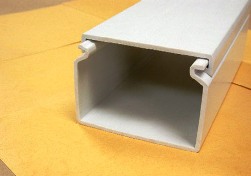 When it becomes necessary to install and install external wiring, preference is most often given to the cable channel. It is understandable: the cable channel complies with fire and electrical safety standards, and in addition, it just looks more advantageous in comparison with, for example, wiring in a corrugated pipe or, especially, open wiring.
When it becomes necessary to install and install external wiring, preference is most often given to the cable channel. It is understandable: the cable channel complies with fire and electrical safety standards, and in addition, it just looks more advantageous in comparison with, for example, wiring in a corrugated pipe or, especially, open wiring.
However, the installation and closure of cable channels (ducts) is truly the highest aerobatics of installing office and home electrical wiring. The variety of sizes, designs and properties of cable channels is so wide that there is simply no question of any uniform rules that uniquely establish the technology for installing plastic boxes. Therefore, those who are going to deal with the cable channel for the first time can be given only some tips that are purely recommendatory in nature ...
Strain gages in automation systems
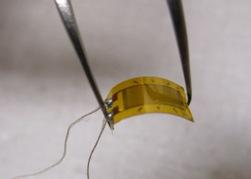 No closed automatic control system is conceivable without sensors, on the testimony of which feedback is formed.
No closed automatic control system is conceivable without sensors, on the testimony of which feedback is formed.
Sensors ... So different in design and principle of action. Sensors of pressure, temperature, speed, effort, current sensors, voltage, displacement ...
But the sensor is just a device that changes its signal in proportion to the measured parameter. And since the most convenient signal for transmission and conversion is electric current, the principle of operation of most sensors is based on a change in their own electrical resistance under the influence of an external factor. Therefore, sensors with built-in tensometric elements have become widespread ...
What is transition contact resistance and how to deal with it
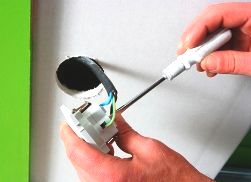 From articles previously posted on bgv.electricianexp.com, you can see that as soon as the question relates to the methods of connecting the wires, disputes immediately arise about which of the connection options is better and more reliable. The best quality contact connection will always be one that provides the lowest transition contact resistance for as long as possible.
From articles previously posted on bgv.electricianexp.com, you can see that as soon as the question relates to the methods of connecting the wires, disputes immediately arise about which of the connection options is better and more reliable. The best quality contact connection will always be one that provides the lowest transition contact resistance for as long as possible.
Contact connections in large numbers are included in all electrical circuits and devices and are their very important elements. Since the trouble-free operation of electrical equipment and wiring depends to a large extent on the state of electrical contacts, in this article, let’s take a look at what “transition contact resistance” is and what factors depend on it. Lean wherein will be on theory of electrical apparatus ...
 Very often, electricians have to connect the electrical installation to an existing line, passing by in relative proximity. In other words, it is necessary to create a branch of the wires.
Very often, electricians have to connect the electrical installation to an existing line, passing by in relative proximity. In other words, it is necessary to create a branch of the wires.
An example is the connection of a private house to a 0.4 kV overhead line or the connection of an apartment electrical switchboard to access electric risers. In both of these cases, the line passes, possibly very close by - here they are, the coveted 220 or 380 volts with the necessary reserve for power, at hand. But how to connect to them?
Since this problem is widespread and long-known, there are already quite a lot of options for solving it, and in this article we will try to consider them in detail. The very first way to create a branch that comes to mind ...
How to repair a New Year's garland
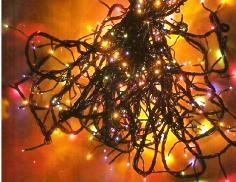 New Years is soon! Christmas trees, toys, all kinds of lights ... cheer up. But how “happy” the situation is when we take the ingenious invention of mankind - the Christmas tree electric garland, plug it into the network, and it does not fully or partially work. What to do?
New Years is soon! Christmas trees, toys, all kinds of lights ... cheer up. But how “happy” the situation is when we take the ingenious invention of mankind - the Christmas tree electric garland, plug it into the network, and it does not fully or partially work. What to do?
The easiest way to solve the problem is to go buy a new garland! But if you don’t want to spend money, believe in your strength and patience, then you can try to become a “resuscitator” of the New Year’s beauty.
Let's start with the fact that we recall: the simplest garland consists of a certain number of bulbs connected in series. With this connection, the operating voltage of the consumers is summed. And we can, for example, turn on 55 light bulbs rated for 6 V each, into a network with a voltage of 220 V ...
Superconductivity in the electric power industry. Part 2. The future of superconductors
 At first glance, new materials, superconductors, seem to be advantageous to use almost everywhere where magnetic fields and electric currents are used. But is it?
At first glance, new materials, superconductors, seem to be advantageous to use almost everywhere where magnetic fields and electric currents are used. But is it?
In order to navigate many technical works with superconductors, it should be borne in mind that there are no superconductors, as such, at all. These are the usual metals known to all, under special conditions exhibiting unusual properties.
Aluminum, for example, conducts electric current well at room temperature, therefore it is considered one of the best conductors. The magnetic field in it is slightly enhanced: such materials are called paramagnets. Aluminum perfectly transmits heat, which means that it can be considered a heat conductor. When cooled to extremely low temperatures, the properties of some metals change significantly ...
